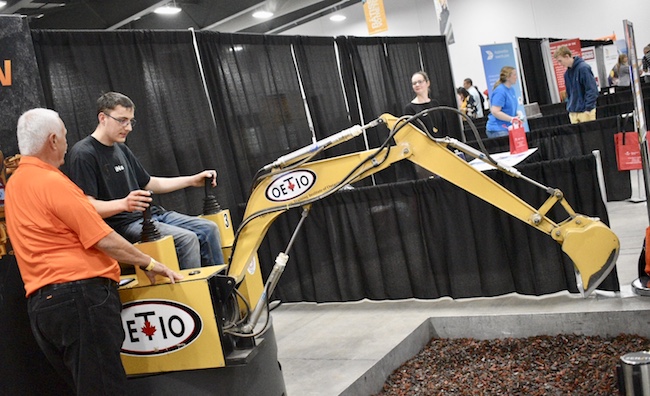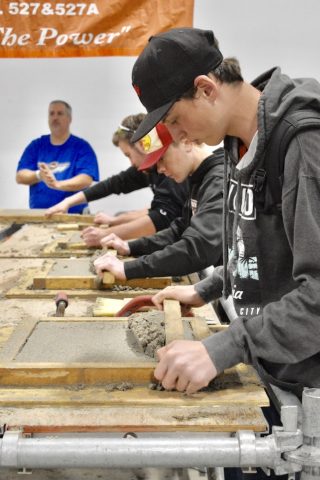
Younger generation gets chance to try out construction trades as industry stares down labour shortage
By David Kennedy
Construction Labour Profiles Skills Development Women in Construction
Future Building gives students a glimpse of what a career in the construction trades could be like, using a range of different tools from training and demo equipment to virtual reality simulators. PHOTO: OCS
OTTAWA—For three days earlier this month, thousands of Ottawa-area students got to try their hands at everything from real-life glass cutting and soldering to welding in virtual reality.
Future Building 2019 rolled through the EY Centre in the Canadian capital May 14 to 16 to help students from grades seven to 12 get a better handle on what a career in the often-overlooked construction trades would look like.
“It was a real enthusiastic group of students,” said Robert Bronk, CEO of the Ontario Construction Secretariat, which organizes the event.
“It’s fun to watch them because in many cases, they’ve never touched a tool before — they’ve never been exposed to any of that. They’re using a drill, or they’re welding or they’re soldering, or they’re cutting glass, or doing stuff that they’ve never done before in a safe, controlled way. They have a lot of fun.”
It’s the touring event’s 15th year playing host to youngsters that rarely get a chance to see just how challenging and rewarding a career in one of the two dozen or so construction trades can be. Hosted by the OCS, which represents the collective interests of 25 separate unionized construction trades with more than 100,000 members, Bronk said the event is often eye-opening for students and teachers alike.
“Influencers like parents and guidance counsellors and teachers, they only think of plumbers, electricians, carpenters [and] painters. They don’t know anything about millwrights, or boilermakers or sheet metal workers or glazers… When they get a chance to see what they do and the technology that’s involved and the tools, it opens their eyes.”
According to post-event polling, 91 per cent of students said they had a better understanding of the construction trades after the event, while 80 per cent of educators said they would be more likely to encourage students to pursue a construction trade career.
Getting more young people interested in all aspects of construction is a key goal for the industry, which faces steep labour challenges in the years ahead. According to the latest figures from labour market watcher BuildForce, about 261,000 veteran construction workers are expected to hang up their hats over the next decade, with only 221,000 new recruits to replace them. Factoring in projected market growth, the industry could be short approximately 80,000 men and women if things don’t change. Appealing to young workers, particularly those from underrepresented groups such as women — who made up a paltry 3.8 per cent of on-site staff last year — is seen as key to turning around the labour crunch.
Changing peoples’ perception of the trades is one part of the fight, Bronk said. With earnings in the trades well above the Canadian average — in the six figures for many journeypersons — setting aside the university degree that may not translate to a stable career, as well as the student debt, is becoming a compelling proposition. Getting students to understand this early by exposing them to successful tradespersons is one of the goals of Future Building.
When it comes to appealing to the next generation, the integration of more and more technology is another important component
“People think [working in the trades means using] a hand drill and a hammer for 40 years, when they’re using lasers, they’re using virtual reality, they’re using augmented reality,” Bronk added. “So teachers and students are changing their perceptions of that. They’re saying, ‘Hey, maybe we don’t need to go to college or university.’”
The Ottawa event wasn’t lacking in this department, with a number of stations playing off the appeal of video games, such as a virtual painter, virtual welder and virtual scaffolding assembly.
More than anything, however, the event is about exposure. “You don’t know what you don’t know,” Bronk said, pointing to students, parents and educators that have never had a hand in construction. While each year’s Future Building can host only several thousands students, it sheds light on a career path that’s often overlooked.





